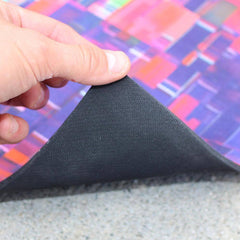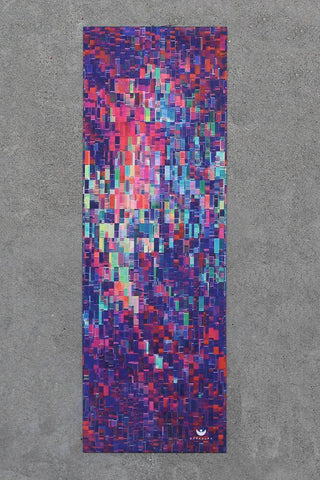- * Gift Cards *
- Yoga
-
Books
- New Releases
- Author Collections
- LifePower Yoga TT
- Card Decks
- Journals / Dream Journals
- Sacred Geometry
- Children's Books
- Meditation Books
- Yoga Books
- Consciousness
- Buddhism
- Vedanta
- Calendars
- Coloring Books
- Dreams
- Health / Wellness
- Hermeticism
- Mindfulness
- Mythology
- Near Death Experience
- Spiritual Wisdom
- Personal Growth
- Spiritual Fiction
- Abundance / LOA
- A Course In Miracles
- Meditation
- Hemi-Sync®
- Wellness
- Blog
- Sign in
-
USD $
- * Gift Cards *
-
Yoga
-
Books
-
Meditation
-
Hemi-Sync®
-
Wellness
- Blog
5 Reasons You Will Fly High on the Magic Carpet Yoga Mat
September 11, 2018
Why You Will Fly High on the Magic Carpet Yoga Mat

Reason 1. You Will Love this Funky Magical Carpet Yoga Mat Design
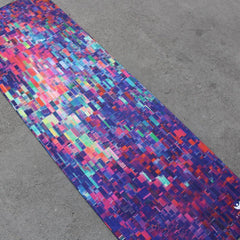
Colorful yoga designs bring yoga mats to life! We love the art deco influence on an artist-designed magic rug yoga mat. Bewitching colors transform from bold, stand-out reds to deep, flowing purples and blues.
Hop on the Magic Carpet Yoga Mat to explore your yoga practice farther than ever before.
Reason 2. Superior Magic Rug Quality

The Magic Carpet Yoga Mat design is printed using dye sublimation, a cutting-edge technique resulting in the most durable prints.
The yoga mat design is placed on a high quality microfiber lining. The product is a long-lasting, vibrant and unique looking magic rug mat.
Reason 3. Easy to Clean, Long Lasting Yoga Mat
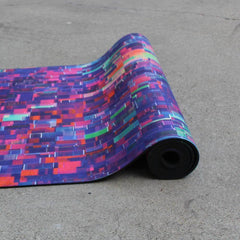
Yoga mats that are simple to clean are our favorite! Cleaning is easy by using a damp cloth to wipe off any mess. If the yoga mat becomes especially messy, put it in a cold washing machine without soap and allow to air dry.
For extra bliss, try misting the yoga mat with a relaxing essential oil before and after practice.
Reason 4. Great Grip for the Best Yoga Mat Experience
Whether practicing yoga on a carpet or on top of a hardwood floor, the Magic Carpet Yoga Mat stays in place. A 100% natural rubber-lined bottom creates grips, sticks and never slips.
Plus, the microfiber top actually becomes stickier with effort and sweat. The surface is soft to touch, supporting your unwinding body during savasana.
Reason 5. Giving Back Good Karma
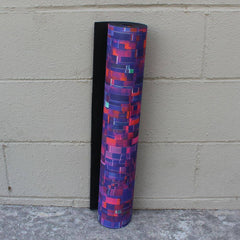
frequencyRiser gives back a portion of every yoga mat sold to the independent artist who inspired it.
Specifically, this magical mat supports the devoted artist Kip Sikora. See more of Kip’s artwork online, or connect with them on LinkedIn.
Bonus! Best Yoga Mat for Carpet
The Magic Carpet Yoga Mat offers great grip to your hands and on the floor. This mat is one of the best for yoga on carpet. There is never a problem with the mat slipping around.
Yoga mat stays in place, while body and mind go on a magical ride!
Buy a Magic Carpet Yoga Mat
Leave a comment
Comments will be approved before showing up.
Also in FrequencyRiser Conscious Lifestyle Blog
Inner Worlds, Outer Worlds Movie
January 01, 2026
There is one vibratory field that connects all things. It has been called Akasha, Logos, the primordial OM, the music of the spheres, the Higgs field, dark energy, and a thousand other names throughout history.
The ancient teachers taught Nada Brahma, the universe is vibration. The vibratory field is at the root of all true spiritual experience and scientific investigation. It is the same field of energy that saints, Buddhas, yogis, mystics, priests, shamans and seers have observed by looking within themselves.
In today's society, most of humanity has forgotten this ancient wisdom. We have strayed too far into the realm of thinking; what we perceive to be the outer world of form. We have lost our connection to our inner worlds.
This balance, what the Buddha called the middle way, what Aristotle called the golden mean, is the birthright of every human being. It is the common link between all religions, and the link between our inner worlds and our outer worlds.
Just Breathe - Breathing animation for relaxation, meditation and relieving anxiety
November 19, 2025
“If you want to conquer the anxiety of life, live in the moment, live in the breath.”
―Amit Ray
Yogis have known the importance of the breath for thousands of years. The ancient sages taught us that “prana”, the vital force circulating through us, can be cultivated and channeled through a spectrum of breathing exercises.
Learning to breathe consciously and with awareness can be a valuable tool in helping to restore balance in the mind and body. Utilize the Breath video to create a controlled meditative breath.
Learn more about meditative and yogic breath from our great selection of yoga and meditation wisdom books:
Breath: frequencyriser.com/products/breath-the-new-science-of-a-lost-art
Yoga Wisdom: frequencyRiser.com/YogaWisdom
Meditation Wisdom: frequencyRiser.com/MeditationWisdom
Are You "Mind Full" Or Mindful? (5 Helpful Books That Will Get You There)
October 10, 2025

It's no secret that our minds become preoccupied with everyday happenings; get the kids up and ready for school on time, quickly run to the grocery store and the bank before flying home to prepare meals and finish folding the laundry. It's time to take a breathe and ask; Am I being "mind full" or mindful?
Great spiritual leaders throughout time, like yogis, shamans, mystics and others, connect to a realm of universal peace, which exists at a higher frequency. By evolving consciousness through yoga and meditation, we are able to rise above the daily grind, and find peace in just existing.
frequencyRiser offers the tools needed to elevate to a higher level of awareness.
When we exist at a higher frequency all aspects of life become powerfully sublime.
Where do we start? What do we do to find inner peace? Below are some books to help you on your journey to enlightenment.
Sign up to get the latest on sales, new releases and more…
© 2026 FrequencyRiser.
Powered by Shopify


